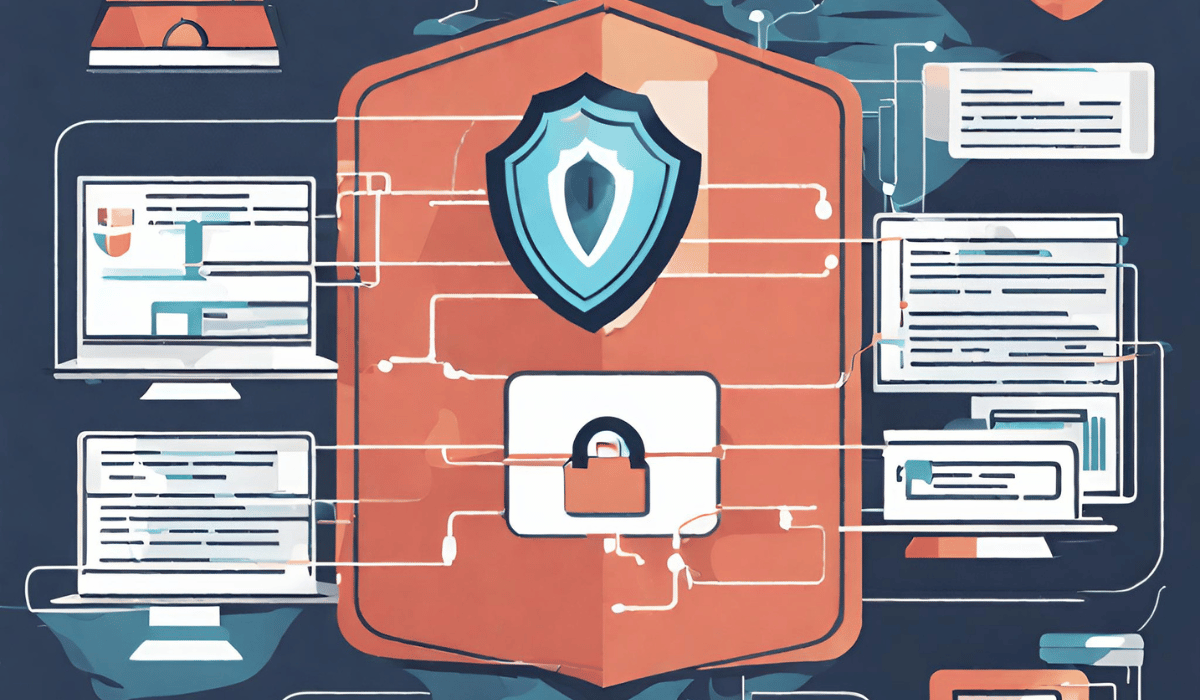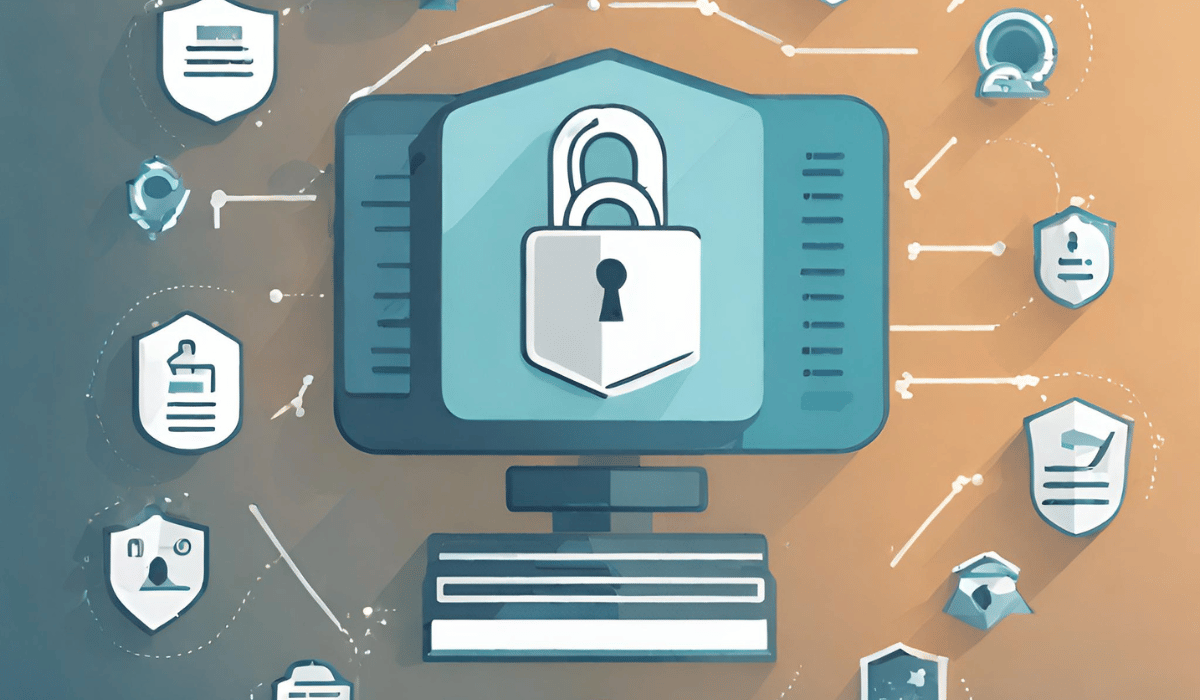In today’s digital age, data security is of utmost importance. With the increasing prevalence of cyber threats, protecting sensitive data from unauthorized access is essential. One method to ensure data security is through encryption. By encrypting data, you can safeguard it from prying eyes and mitigate the risk of data breaches.
Understanding Data Encryption
Data encryption converts plain text data into an unreadable format called ciphertext. This ciphertext can only be decoded or decrypted using a specific key or password. Encryption provides an added layer of security by scrambling the data, making it nearly impossible for unauthorized individuals to make sense of it.
What is Data Encryption?
Data encryption is a cryptographic technique that uses algorithms to transform data into an unreadable format. The process involves using an encryption key, a set of mathematical rules or algorithms, to convert the original data into ciphertext. This ciphertext can only be reversed to its original form with the corresponding decryption key or password.
Data encryption can be implemented in various ways, such as symmetric and asymmetric encryption. Symmetric encryption uses a single key for encryption and decryption, while asymmetric encryption uses a pair of keys – a public key for encryption and a private key for decryption.
The encryption process typically involves several steps. First, the data is divided into blocks, and each block is processed separately. Then, the encryption algorithm applies mathematical operations to each block, transforming it into ciphertext. Finally, the ciphertext is transmitted or stored securely.
Why is Encrypting Data Important?
Encrypting data is essential for several reasons. Firstly, it ensures the privacy and confidentiality of sensitive information. In the event of a data breach, encrypted data is significantly harder to decipher, providing an added layer of protection. This is particularly crucial for industries that handle sensitive data, such as healthcare, finance, and government.
Secondly, data encryption helps to comply with various data protection regulations, such as the General Data Protection Regulation (GDPR), which mandates the secure handling of personal data. Organizations that fail to implement adequate encryption measures may face legal consequences and reputational damage.
Furthermore, encrypting data builds trust with customers and stakeholders. Organizations demonstrate their commitment to protecting sensitive information by implementing robust encryption methods. This, in turn, enhances their reputation and helps to foster strong relationships with clients.
It is important to note that data encryption is not a foolproof solution. While it significantly enhances security, it is still possible for determined attackers to decrypt encrypted data given enough time and resources. Therefore, it is crucial to regularly update encryption algorithms and keys to stay ahead of potential threats.
In conclusion, data encryption plays a vital role in safeguarding sensitive information and complying with data protection regulations. By understanding the basics of data encryption and implementing robust encryption measures, organizations can mitigate the risks associated with data breaches and build trust with their stakeholders.
Types of Data Encryption
When it comes to protecting sensitive information, data encryption plays a vital role. There are two primary types of data encryption: symmetric and asymmetric. Each has its advantages and use cases, ensuring the security and integrity of data in different scenarios.
Symmetric Encryption
Symmetric encryption, also known as secret key encryption, uses a single key for both the encryption and decryption processes. This means that the same key is used to encrypt the data on the sender’s side and decrypt it on the recipient’s side. Symmetric encryption is highly efficient and faster than asymmetric encryption, making it suitable for large volumes of data.
One of the key advantages of symmetric encryption is its simplicity. The encryption and decryption algorithms are straightforward, resulting in faster processing times. This efficiency makes it ideal for scenarios where real-time encryption and decryption are required, such as in secure communication channels and data storage.
However, the challenge with symmetric encryption lies in securely sharing the encryption key with the intended recipient. If the key falls into the wrong hands, it can compromise the security of the encrypted data. Establishing a secure key exchange mechanism is crucial to ensure the confidentiality of the key during transmission.
Asymmetric Encryption
Asymmetric encryption, also known as public key encryption, is a more complex method that uses a pair of keys: public and private keys. The public key is used for encryption, while the private key is used for decryption. Unlike symmetric encryption, asymmetric encryption does not require sharing a secret key, making key exchange more secure.
Using separate keys for encryption and decryption provides an additional layer of security. As the name suggests, the public key can be freely shared with anyone who wants to send encrypted data. This allows for secure communication channels, as the sender encrypts the data using the recipient’s public key, which can only be decrypted using the recipient’s private key.
Asymmetric encryption is also commonly used for digital signatures. Using the sender’s private key to encrypt a hash of the data, the recipient can verify the integrity and authenticity of the message using the sender’s public key. This ensures that the data has not been tampered with during transmission.
However, asymmetric encryption’s computational complexity is higher than symmetric encryption’s. The algorithms involved are more resource-intensive, resulting in slower processing times. As a result, asymmetric encryption is typically used for scenarios where the security benefits outweigh the performance impact, such as secure communication channels and digital signatures.
Both symmetric and asymmetric encryption play crucial roles in data security. Symmetric encryption is faster and more efficient, making it suitable for large volumes of data. On the other hand, asymmetric encryption provides a more secure key exchange mechanism and is commonly used in secure communication channels and digital signatures. Understanding the strengths and weaknesses of each type of encryption allows organizations to choose the most appropriate method based on their specific security requirements.
Methods For Encrypting Data In Use

Here are the methods for encrypting data in use, organized with headings, numbering, and bold text:
-
Secure Sockets Layer/Transport Layer Security (SSL/TLS):
- SSL/TLS protocols provide secure communication channels between clients and servers.
- Encrypts data during transmission to prevent eavesdropping and tampering.
- Commonly used for securing data transmitted over the internet, such as web browsing, email, and file transfers.
-
Full Disk Encryption (FDE):
- FDE encrypts the entire hard drive or storage device, including the operating system and data.
- Ensures all data in use is encrypted and protected from unauthorized access if the device is lost or stolen.
- Operating systems like Windows (BitLocker) and macOS (FileVault) offer built-in FDE capabilities.
-
Application-Level Encryption:
- Some applications provide built-in encryption mechanisms to protect data in use.
- Encrypts specific files, folders, or databases accessed by the application.
- Encryption techniques are often transparent to the user and provide an additional layer of security.
-
Homomorphic Encryption:
- Homomorphic encryption allows computations on encrypted data without decryption.
- Enables secure data processing while maintaining privacy.
- Complex field and may not be practical for all use cases.
-
Trusted Execution Environments (TEEs):
- TEEs create secure enclaves within the system’s hardware or CPU.
- Provides isolated execution environments for sensitive operations.
- Allows secure data processing without exposing it to other system parts.
- Examples include Intel SGX and ARM TrustZone.
-
In-Memory Encryption:
- In-memory encryption protects data stored in the computer’s memory (RAM).
- Prevents unauthorized access through techniques like memory scraping or cold boot attacks.
- Implemented at the application level or using hardware features like Intel Memory Encryption Extensions (MEE).
It’s important to carefully evaluate the trade-offs between security and performance when implementing data-in-use encryption in specific scenarios.
Step-by-Step Guide to Encrypting Data

Preparing for Data Encryption
Before diving into the encryption process, adequately preparing your data and environment is crucial.
Data encryption is an essential step in safeguarding sensitive information from unauthorized access. It confirms that even if someone gains access to your data, they won’t be able to decipher it without the encryption key. However, encryption alone is not enough. To ensure a smooth and successful encryption process, you should take a few important steps.
Backing Up Your Data

Before encrypting your data, it is essential to create a backup. If any issues arise during the encryption process, a backup ensures you won’t lose your valuable data. Regular backups are a best practice, regardless of data encryption.
When creating a backup, it is important to consider the storage medium. Storing backups on the same device or server where the original data resides may not be sufficient. A hardware failure or a security breach could result in losing the original data and the backup. It is recommended to store backups in a secure location or use cloud storage services that offer encryption. Cloud storage provides an additional layer of protection by storing your data in remote servers with advanced security measures.
Furthermore, it is advisable to test the integrity of your backups periodically. This ensures the backup files are not corrupted and can be restored successfully.
Choosing the Right Encryption Software
Choosing the appropriate encryption software is crucial to ensure the effectiveness of your data encryption. Various encryption algorithms are available, each with its strengths and weaknesses. When selecting encryption software, it is important to consider factors such as the encryption algorithm, ease of use, compatibility, and security features.
Encryption algorithms are mathematical formulas determining how your data will be transformed into an unreadable format. Popular encryption algorithms include AES (Advanced Encryption Standard), RSA (Rivest-Shamir-Adleman), and Blowfish. Each algorithm has its own level of security and performance, so choosing one that suits your specific needs is important.
In addition to the encryption algorithm, ease of use is another important factor. Encryption software should have a user-friendly interface that allows you to encrypt and decrypt your data easily. It should also provide clear instructions and guidance to ensure you can navigate the encryption process smoothly.
Compatibility is another crucial aspect to consider. The encryption software you choose should be compatible with your operating system and devices. It should support the file formats you commonly work with, ensuring you can encrypt all sensitive data.
Security features are also vital when selecting encryption software. Look for features like strong password requirements, two-factor authentication, and automatic data shredding. These features enhance the security of your encrypted data and protect it from unauthorized access.
Lastly, it is advisable to opt for well-established encryption software that security experts have reviewed. Reading reviews and seeking recommendations from trusted sources can help you make an informed decision.
Following these preparatory steps ensures that your data encryption process is smooth, secure, and effective. Remember, data encryption is an ongoing process, and it is important to stay updated with the latest encryption technologies and best practices to protect your sensitive information.
Now that you’ve prepared your data and selected the right encryption software, let’s dive into the step-by-step process of encrypting your data.
Installing Encryption Software

The first step is to install the chosen encryption software on your device. Follow the software’s installation instructions, ensuring you download it from a reputable source. Be cautious of malware or fake encryption software.
Setting Up Encryption Keys
After successfully installing the encryption software, you must set up encryption keys. These encryption keys will be used to encrypt and decrypt your data. Generate strong encryption keys and store them securely. Many encryption software offers key management features to help you organize and protect your keys.
Encrypting Your Data
You can encrypt your data once your encryption software and keys are set up. Most encryption software provides a user-friendly interface that allows you to select the files or folders you wish to encrypt. Follow the software’s instructions to initiate the encryption process. The encryption process may take some time, depending on the amount of data.
Verifying Your Encrypted Data
After encrypting your data, it is crucial to ensure that the encryption process is successful and that your data is securely encrypted.
How to Check if Your Data is Encrypted?
To verify data encryption, you can attempt to access the encrypted files without using the corresponding decryption key or password. If the files remain unreadable, your data is properly encrypted. Additionally, some encryption software provides verification features that allow you to confirm the encryption status of your data.
Troubleshooting Common Encryption Issues
While encrypting data, you might encounter some common issues. These could include compatibility issues between encryption software and file types, forgotten encryption keys or passwords, or difficulties decrypting the data. Consult the documentation or support resources your encryption software vendor provides to troubleshoot these issues effectively.
Key Takeaways
- Data encryption is essential in today’s digital age to protect sensitive information and mitigate the risk of data breaches.
- Understanding data encryption involves converting plain text data into unreadable ciphertext using encryption algorithms and keys.
- Symmetric encryption uses a single key for encryption and decryption, while asymmetric encryption uses a pair of keys.
- Encrypting data is important for maintaining privacy, complying with regulations, and building customer trust.
- Factors affecting the cost of data encryption include the type of data, encryption software used, and complexity of the encryption process.
- There are two primary types of data encryption: symmetric and asymmetric encryption, each with advantages and use cases.
- Before encrypting data, it is important to back it up and choose the right encryption software that meets security requirements.
- The step-by-step guide to encrypting data includes installing encryption software, setting up encryption keys, encrypting the data, and verifying the encrypted data.
- Data encryption refers to protecting data while it is processed or accessed.
- Techniques for encrypting data include homomorphic encryption, secure enclaves, and trusted execution environments.
- Encrypting patient data, understanding the cost implications, and implementing data encryption at various stages is crucial for safeguarding sensitive information and ensuring data privacy.
FAQs
What are some best practices for encrypting data in use?
Here are some recommended practices:
- Implement encryption at the application level.
- Utilize trusted execution environments (TEEs) for secure processing.
- Ensure secure memory management to protect data in memory.
- Consider data tokenization to minimize exposure of sensitive information.
- Leverage hardware encryption acceleration for improved performance.
- Establish a robust key management system.
- Use encryption features provided by cloud service providers.
- Secure communication channels during data transmission.
- Conduct regular security audits and updates.
How can I implement encryption at the application level?
Encryption at the application level involves using encryption libraries or APIs provided by programming languages. These libraries enable you to encrypt sensitive data before processing and decrypt it when needed. By integrating encryption directly into your applications, you maintain control over the encryption process and ensure data security.
What are trusted execution environments (TEEs) and how can they help encrypt data in use?
Trusted execution environments (TEEs) are secure enclaves within a computer’s processor that protect sensitive computations and data from the rest of the system. TEEs provide a secure processing environment, shielding data from potential threats. By utilizing TEEs, you can ensure that sensitive data is encrypted and processed securely, reducing the risk of exposure.
How does secure memory management contribute to encrypting data in use?
Secure memory management involves implementing secure coding practices and techniques to prevent vulnerabilities that could expose sensitive data in memory. By addressing issues such as memory leaks, buffer overflows, and other memory-related vulnerabilities, you enhance the overall security of data in use.
Why is key management important for data encryption in use?
Key management is crucial for maintaining the security of encrypted data. It involves securely storing and managing encryption keys, rotating keys periodically, and implementing proper access controls. Effective key management ensures that encryption keys are protected, minimizing the risk of unauthorized access and ensuring the integrity of encrypted data.
Are there any specific encryption techniques recommended for encrypting data in use?
Encryption techniques can vary depending on the specific requirements of your use case. However, common encryption algorithms such as Advanced Encryption Standard (AES) are widely used for data encryption in use. It’s important to choose a strong encryption algorithm and follow recommended encryption practices to ensure the security of your data.
How often should I conduct security audits and updates for encrypting data in use?
Regular security audits are recommended to identify and address any vulnerabilities in your encryption mechanisms or processing environment. The frequency of audits may vary depending on factors such as the sensitivity of the data and regulatory requirements. Additionally, stay updated with security best practices and promptly apply security patches and updates to maintain a secure environment.
Is encrypting data in use enough to ensure data security?
Encrypting data in use is an essential security measure, but it should be complemented by other security practices. It is crucial to implement a defense-in-depth approach that includes access controls, authentication, secure coding practices, monitoring, and other security measures. Together, these practices provide comprehensive protection for your sensitive data.
Conclusion
By following this step-by-step guide, you can protect your sensitive data by encrypting it. Remember, data encryption is an ongoing process, and staying updated with the latest encryption techniques and best practices is crucial. Prioritize data security to safeguard your valuable information from potential threats.
